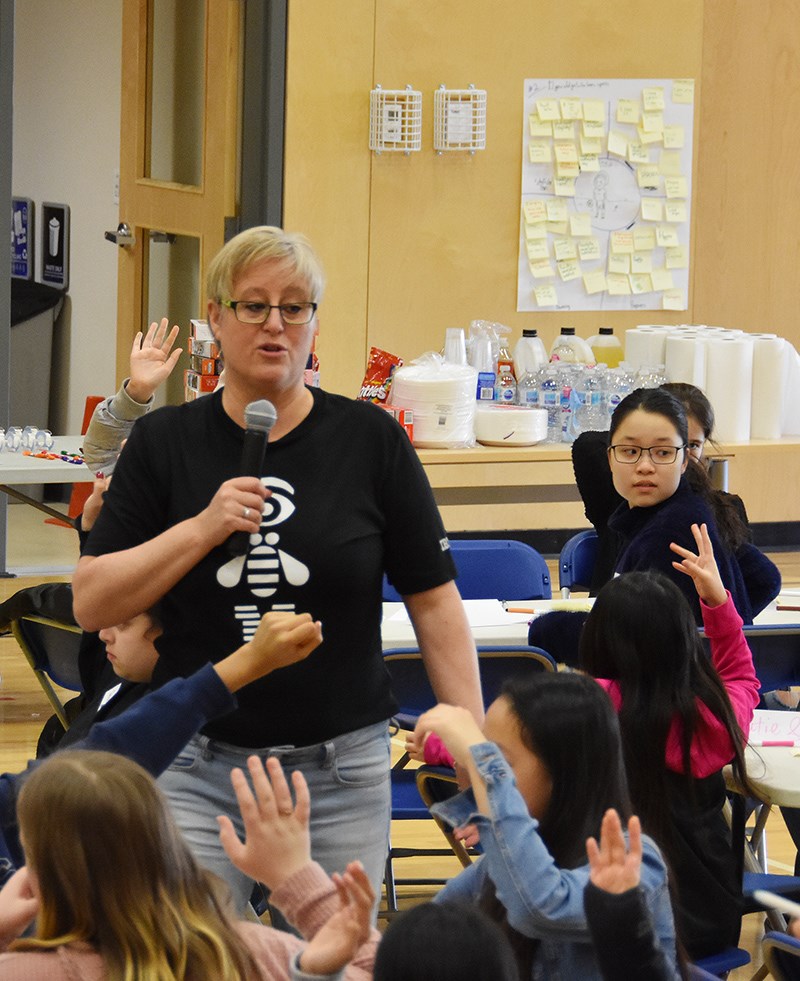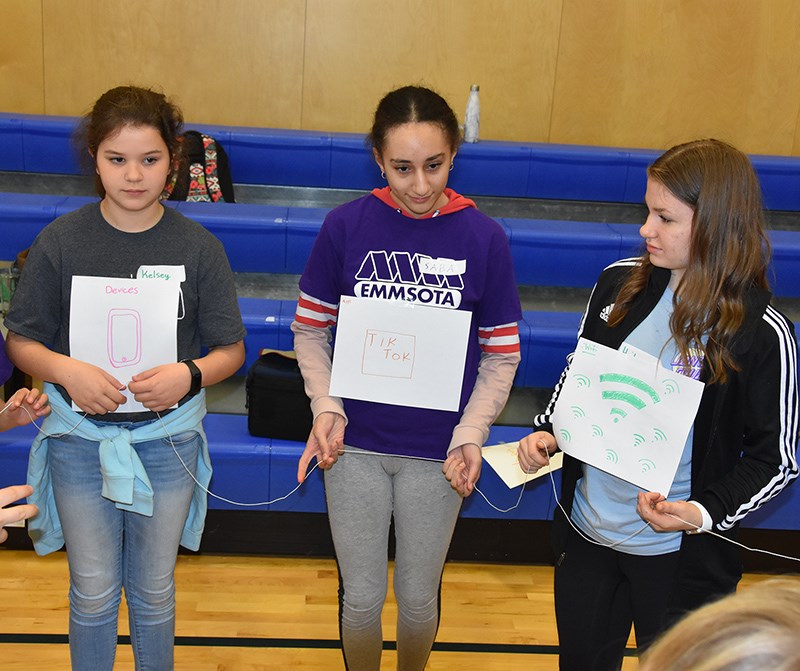Don’t ask a teenager what career they will have when they grow up because the job may not have been invented yet.
But a day-long workshop for girls interested in science, technology, engineering, and math (STEM) will some plan for that unknown future.
That’s the hope of Krista Shibata, who created the STEM 4 Girls Camp for IBM and hosted it Friday for 110 middle school students from Coquitlam, Port Coquitlam, Port Moody and New Westminster schools.
She told The Tri-City News that the idea for the program, held Feb. 21 at Moody middle school, is to inspire more girls to learn about STEM and eventually make careers in in those fields.
LIKE TECHNOLOGY IN SCHOOLS STORIES? READ THIS
Here's how a robot could teacher your kids to code.
In her presentation, she listed a number of jobs, such as social media influencer and YouTuber content creator that didn’t exist a few years ago, and when students were asked if they had phones or other internet-connected devices, everyone put up their hands.
Later, she told The Tri-City News, “If we can inspire any of these ladies to feel like they belong in STEM, that’s great, because it’s part of everything now.”
The students did experiments with liquids, collaborated in groups to finish puzzles that had some of the pieces missing, and built a model of the internet using their own bodies, string and paper to depict how everything from apps to the cloud are connected online.

And while "building" the internet may have left some students confused, others thought it was a good way to explain the ubiquitous but rarely understood phenomenon that has us all wired to one another through our phones, tablets and other screens while satellites, servers and other equipment process, share and organize our photos, text messages and other data.
When asked if the activities helped her understand how the internet works, one student, Katherine McAloney, said, “Kind of” but noted that she enjoyed the opportunity to connect with other girls interested in STEM.
“I love science,” she said.

Dave Sands, principal of technology implementation for SD43, said the district agreed to host the program as part of its commitment to technology innovation for education.
One issue facing society, he said, is that few women are employed in STEM-related fields at a time when the world needs scientists, technology specialists and engineers.
But that could soon change because the school curriculum now includes applied design, skills and technologies, which is levelling the playing field because all students are learning about design thinking, and how to solve problems using technology. As an example, he noted that school events where students compete to program robots called Spheros are drawing as many girls as boys, if not more.
“We consistently see equal if not more girls involved in the event. That’s been really encouraging and really positive.”



